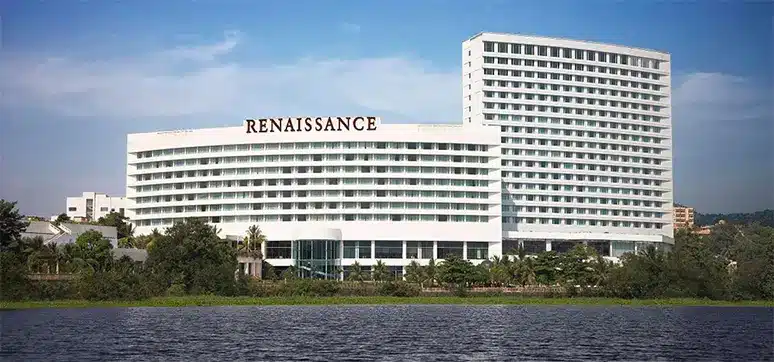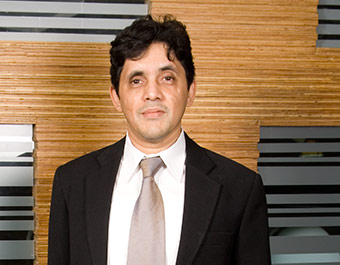
“A great leader’s courage to fulfil his vision comes from passion & not position.
With a legacy of over 45 years of excellence in architecture, PG Patki Associates continues to instil the creative spirit in their designs. Started by the late Mr PG Patki, the practice is one of the front runners in the country with a number of prestigious projects to their credit. Carrying forward this legacy of distinction, Mr S P Patki is now at the helm of PG Patki associates. With an azimuth zeal and passion towards the job, this spirit flows over to the whole team of P G Patki Architects. Mr Patki maintains: “It is not always about superficiality, for even iconic ones can be huge architectural failures. It is a balancing act where detail, character and fundamentals are not compromised, where structure reflects the mark of the individual; the soul behind it”
In awe of the work the firm has bestowed all over the country and of the man himself, WFM asked for an appointment and was obliged when Mr. SP Patki kindly agreed to spare some of his valuable time from his packed schedule and took us through his fantastic journey.
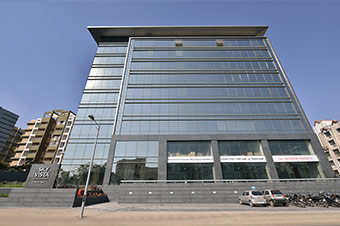 Hailing from a family of one of the finest architects the country has seen, design and creativity were an integral part of his upbringing. It was not a surprise when he decided to be an architect and donned his father’s hat after graduating from JJ College of Architecture in the mid-80s. When asked about what would have become if not for the architect, pat came the reply – “I really don’t know. This is what I have always wanted to be”
Hailing from a family of one of the finest architects the country has seen, design and creativity were an integral part of his upbringing. It was not a surprise when he decided to be an architect and donned his father’s hat after graduating from JJ College of Architecture in the mid-80s. When asked about what would have become if not for the architect, pat came the reply – “I really don’t know. This is what I have always wanted to be”
The nobility of the profession is expressively reflected in the way he speaks and the buildings he designs. He feels architecture is driven more by passion because in many ways it is a labour of love and not always commercially gratifying. Ultimately one has to explore endless ways to improve the design.“I do it every day. You can never get the perfect design. You are always a student and you’re always learning. You need to constantly upgrade yourself as this is a dynamic profession. I think the day when an architect will achieve the perfect design; it would be the end of evolution. Architecture has evolved over centuries and at every stage of human civilization, architecture has played a determining role in expressing the sentiments that the era and time stand for.
Mr. Patki firmly believes that the design first evolves in the mind and then gets translated on a piece of paper. Technological advancements are an added aid that helps in the betterment of the design. But the concept has to first evolve in the mind and then with the help of technological arbitrations an architect conveys the design.
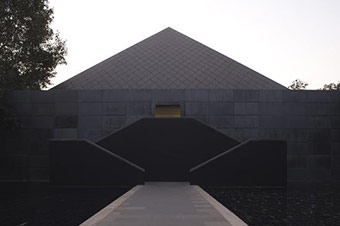
In close to 30 years since Mr. SP Patki took the reins of the practice in his hands, the PG Patki associates have embarked upon and successfully completed various projects across all segments vis-à-vis hotels, retail establishments, hospitals, townships, commercial buildings as well as the residential developments. Talking about the gradual and definitive transition, one philosophy that the firm strictly follows is the correct beginning. “An architect has to learn as much as possible about the project and the requirements from the first brief he is given. Every building has a different concept and different functions are expected of each of them. While a lot of buildings focus on operations and technology, others might want a dedicated work area for operations managers, equipment handlers etc. So basically an architect needs to set in place machinery, a system. We create a diagram of movement for various entities. For instance, in a town planning scheme, there would be a need for basic pathways, green areas, commercial areas etc. Likewise, 15 years ago you didn’t have a retail model in India but suddenly it is there now and you need to adapt. It is all about how quickly you grasp the requirements of your user. There is no room for error.
Talking about the core area of our magazine, Mr Patki opines that there are basically two things that dictate the design of a door or a window. The primary function of a window is to be a guardian between the external and internal environments. Its purpose is to guard against rain, heavy wind, pollution and strong sunlight. As long as it is achieving this, the window is great. But a basic window by itself cannot prevent solar radiation from coming in. They have to be specifically designed to achieve proper performance. Coming from a hotel-dominant background, they have been using high-performance double-glazing units and double and triple-seal window frames to ensure the interiors of our tall buildings against leakages high wind loads etc.
With tongue firmly in cheek Mr. Patki acknowledges the role of various consultants as he believes that as an architect, his core competence is in design. The engineering has to come from the Consultant and he would integrate the same into his design. “We direct what we want but we integrate the inputs,” said Mr. Patki.
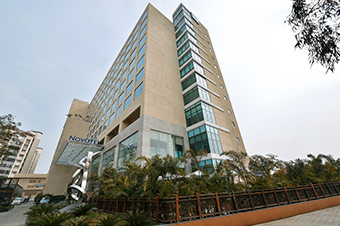
Working in a country where we have hardly any standards defined for the façade and windows, Mr. Patki typically sticks to the fundamentals of situation and environment-driven norms. For him, the window design is generally dictated by the location of the window. A window on the 1st floor will be different from the one on the 50th floor. Even though they might have the same design to look at, their technology, hardware used and functionality are bound to differ. Likewise, the aesthetics may not, but the requirement in terms of safety might differ invariably. “The buildings today are supposed to be created as sustainable individual animals sitting perfectly in tune with the environment. The variation in architecture usually comes into play with the variation of the natural environment which plays a key role in the architecture” – gushes Mr. Patki.
Talking about his personal choices, Mr SP Patki is not too much in favour of uPVC windows for the simple reason that they don’t fit into the aesthetic space of his designs, although he has used them in some of his projects. Although a wooden window remains his favourite, for obvious reasons of options available and a choice of design and functional features, he uses aluminium windows a lot in his projects. The finish can range from anodized to powder coated or even wood grain lamination as and when the design permits and the requirement generally comes from the user. For him, all the entities that comprise a window, viz. sub-frame, frame, sash, window styles, glass and hardware, all hold importance and are indispensable to a stable and correct window assembly. He believes that the entire unit has to be so designed structurally that it passes all the tests. “The finish is just one aspect of it, the whole window is much more than that” – said Mr. Patki.
Mr. Shekhar Patki shed some light on various factors that influence his decision while choosing a particular window type from the available gamut of sliding, folding, casement, fixed or others. He believes the usage of the building has a lot to do with the typology that is chosen. For instance, commercial and office buildings are usually centrally air-conditioned, so fixed windows become the obvious choice, barring a few openable panels to ensure fire safety. In certain places there sometimes comes a requirement to have smoke panels above the standard windows. Most commonly in 80% of the buildings, the thumb-rule of sliding for residential and fixed for commercial may be applied. The catch is with the rest of 20% where various other attributes come into play and govern the choice of windows. He also related examples of how in earlier times the only way to clean a façade was from inside. For this reason, it was imperative to have openable panels. But now with the advent of sophisticated façade access systems, that’s no longer an issue. Thus, in a nutshell, it all depends on the individual micro and macro environment of the building.
He further added that he always aspires to innovate and bring out-of-the-box ideas but would never experiment at the cost of the clients. “If I choose to innovate, I make sure it is approved by my client and standardised as per law. We have attempted certain flamboyant buildings, but the majority remain on the drawing board because of cost constraints. We have used congregated, convex and concave glasses, bubble glasses and glasses with an intricate framework from the inside out to give the whole building a unique look and disposition. But most of our buildings are conventional and largely rectilinear. However, The Osho Commune is an obvious exception with a unique design where the pyramid is 80 feet tall with a floor base of 25,000 square feet. The roof is completely black metal, insulated against heat and acoustically treated for sound variations. Normally, a pyramid is a very difficult structure to construct for acoustic specifications but we were able to achieve that with daft precision. PG Patki Associates’ projects enjoy the reputation of being operationally correct and viable.
Some of the major projects that reckon the fabulous architecture by PG Patki Associates and Mr Shekhar Patki’s personal favourites are Hotel Shangri-La, Mumbai, The Intercontinental, The Oberoi, and The Renaissance. Amar Vilas in Agra, Raj Vilas in Jaipur and The Osho Commune in Pune are also some interesting structures. In next foreseeable future, there could be some residential high rises in South Mumbai designed by the celebrated firm.
Describing how the trend is changing, Mr Patki threw some light on the facades of some of his latest projects. The Shangri-La is a beautiful fully glazed building, whereas The Intercontinental is a nice mix of stone, plaster and windows in full height made of aluminium with wooden casing giving it a really nice and different feel.
Explaining whether privacy is breached by having huge glass facades or floor-to-ceiling windows, Mr Patki re-iterated – “It is more about the light coming in rather than privacy. Windows today are designed keeping in mind – maintenance, sustainability and environmental issues. A regular 4×6 feet was once considered a perfect window. But today’s customer is aspirational. The regular windows are made larger and wider just to give it a feel of continuity between outside and inside, while the privacy is taken care of by means of curtains and blinds. Thus, architecture is vast with variations cropping up at every other instance.
We concluded our discussion with his view on the outlook for the coming times to which he mentioned that they are flooded with a lot of different types of projects that involve hotels, residential and a few hospitals. According to Mr. SP Patki, education and hospitality are going to be the next best things and they are happy to be contributing to society through this.
He added a profound message for our readers – “Keep doing the work with sincerity and help create a product for the society. Make something today that would become a benchmark tomorrow. We need to pass the test of not weathering but the test of time. We need to constantly improvise with time!”
